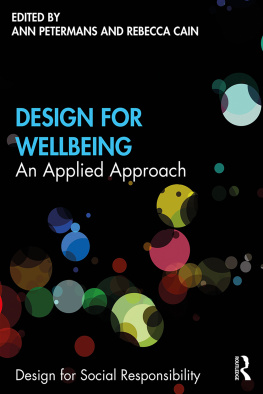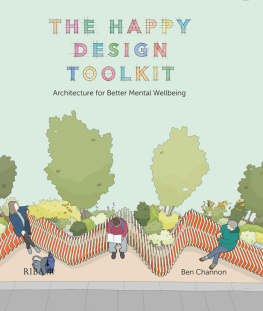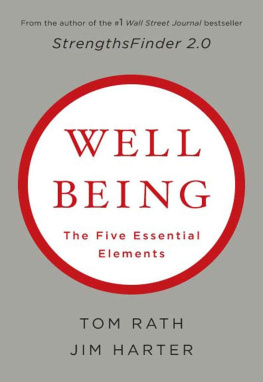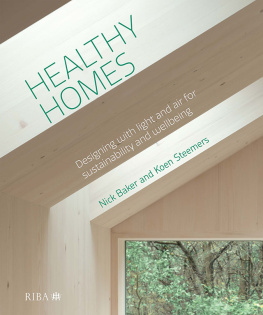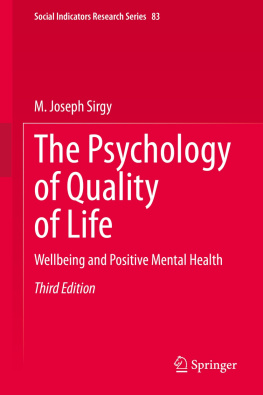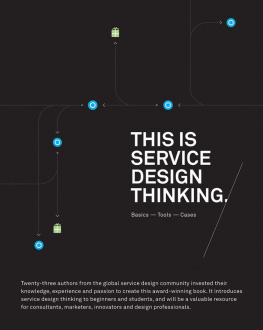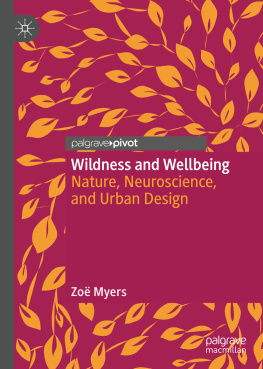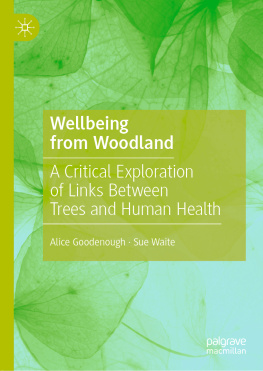Design for Wellbeing
Design for Wellbeing charts the development and application of design research to improve the personal and societal wellbeing and happiness of people. It draws together contributions from internationally leading academics and designers to demonstrate the latest thinking and research on the design of products, technologies, environments, services and experiences for wellbeing.
Part I starts by conceptualising wellbeing and takes an in-depth look at the rise of the design for wellbeing movement. Part II then goes on to demonstrate design for wellbeing in practice through a broad range of domains from products and environments to services. Among others, we see emerging trends in the design of interiors and urban spaces to support wellbeing, designing to enable and support connectedness and social interaction, and designing for behaviour change to tackle unhealthy eating behaviour in children. Significantly, the body of work on subjective wellbeing, design for happiness, is increasing, and several case studies are provided on this, demonstrating how design can contribute to support the wellbeing of people. Part III provides practical guidance for designing for wellbeing through a range of examples of tools, methods and approaches, which are highly user-centric, participatory, critical and speculative. Finally, the book concludes in Part IV with a look at future challenges for design for wellbeing.
This book provides students, researchers and practitioners with a detailed assessment of design for wellbeing, taking a distinctive global approach to design practice and theory in context. Design for Wellbeing concerns designers and organisations but also defines its broader contribution to society, culture and economy.
Ann Petermans is Assistant Professor at the Faculty of Architecture and Arts, Hasselt University, Belgium. She chairs the Design Research Societys Special Interest Group on Design for Wellbeing, Happiness and Health. Her research interests pertain in particular to designing for experience in designed environments and for diverse user groups, and research related to design for subjective wellbeing and how architecture and interior architecture can contribute in this respect. Ann is editorial board member of The Design Journal and publishes in various high-quality journals. She is also coeditor of the book Retail Design: Theoretical Perspectives , published by Routledge in 2017.
Rebecca Cain is Professor of Transdisciplinary Design, in the School of Design and Creative Arts, Loughborough University, UK. She also holds the position of Associate Dean for Enterprise. An industrial designer by training, her expertise is in bringing together different disciplines and working with industry and society to design and research future products, environments, services and systems that create positive outcomes for people. She works across sectors including mobility, energy and healthcare. She founded the Design Research Societys Special Interest Group for Wellbeing, Happiness and Health, which she now co-convenes.
Design for Social Responsibility
Series Editor: Rachel Cooper
Social responsibility, in various disguises, has been a recurring theme in design for many years. Since the 1960s several more or less commercial approaches have evolved. In the 1970s designers were encouraged to abandon design for profit in favour of a more compassionate approach inspired by Papanek. In the 1980s and 1990s profit and ethical issues were no longer considered mutually exclusive and more market-oriented concepts emerged, such as the green consumer and ethical investment. The purchase of socially responsible, ethical products and services has been stimulated by the dissemination of research into sustainability issues in consumer publications. Accessibility and inclusivity have also attracted a great deal of design interest and recently designers have turned to solving social and crime-related problems. Organisations supporting and funding such projects have recently included: the NHS (research into design for patient safety); the Home Office (design against crime); and the Engineering and Physical Sciences Research Council (design decision-making for urban sustainability).
Businesses are encouraged (and increasingly forced by legislation) to set their own socially responsible agendas that depend on design to be realised. Design decisions all have environmental, social and ethical impacts, so there is a pressing need to provide guidelines for designers and design students within an overarching framework that takes a holistic approach to socially responsible design. This edited series of guides is aimed at students of design, product development, architecture and marketing, and design and management professionals working in the sectors covered by each title. Each volume includes: the background and history of the topic, its significance in social and commercial contexts and trends in the field; exemplar design case studies; and guidelines for the designer and advice on tools, techniques and resources available.
9Design for Healthcare
Edited by Emmanuel Tsekleves and Rachel Cooper
10Design for Personalisation
Edited by Iryna Kuksa and Tom Fisher
11Design for Behaviour Change
Edited by Kristina Niedderer, Stephen Clune and Geke Ludden
12Design for Wellbeing
An Applied Approach
Edited by Ann Petermans and Rebecca Cain
Design for Wellbeing
An Applied Approach
Edited by Ann Petermans and Rebecca Cain

First published 2020
by Routledge
2 Park Square, Milton Park, Abingdon, Oxon OX14 4RN
and by Routledge
52 Vanderbilt Avenue, New York, NY 10017
Routledge is an imprint of the Taylor & Francis Group, an informa business
2020 selection and editorial matter, Ann Petermans and Rebecca Cain; individual chapters, the contributors
The right of Ann Petermans and Rebecca Cain to be identified as the authors of the editorial material, and of the authors for their individual chapters, has been asserted in accordance with sections 77 and 78 of the Copyright, Designs and Patents Act 1988.
All rights reserved. No part of this book may be reprinted or reproduced or utilised in any form or by any electronic, mechanical, or other means, now known or hereafter invented, including photocopying and recording, or in any information storage or retrieval system, without permission in writing from the publishers.
Trademark notice : Product or corporate names may be trademarks or registered trademarks, and are used only for identification and explanation without intent to infringe.
British Library Cataloguing-in-Publication Data
A catalogue record for this book is available from the British Library
Library of Congress Cataloging-in-Publication Data
Names: Petermans, Ann, editor. | Cain, Rebecca, 1978- editor.
Title: Design for wellbeing: an applied approach/edited by Ann Petermans and Rebecca Cain.
Description: Abingdon, Oxon; New York, NY: Routledge, 2020. | Series: Design for social responsibility; 12 | Includes bibliographical references and index.
Identifiers: LCCN 2019030574 (print) | LCCN 2019030575 (ebook) | ISBN 9781138562929 (hardback) | ISBN 9781315121383 (ebook)Subjects: LCSH: DesignSocial aspects. | Well-being.
Classification: LCC NK1520 .D46535 2020 (print) | LCC NK1520 (ebook) | DDC 745.4dc23
LC record available at https://lccn.loc.gov/2019030574
LC ebook record available at https://lccn.loc.gov/2019030575
ISBN: 978-1-138-56292-9 (hbk)
ISBN: 978-1-315-12138-3 (ebk)

